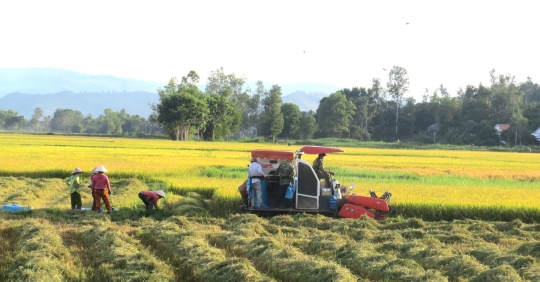The Tra Buong River flows through the two townships of Xuan Phuoc and Xuan Quang 3 (Dong Xuan District, Phu Yen Province). Crossing Xuan Phuoc Township, Phu Xuan Lake prevents the Tra Buong Current from accumulating. In the past, in the dry season, the Tra Buong River was dry and sluggish and only flowed intermittently, the water could not integrate with the Ky Lo River to flow into the sea. Now it’s different, thanks to the Phu Xuan Lake blocking the creek, the Tra Buong River has “resurrected”, the water flows all year round.
Ho Phu Xuan “revived” the Tra Buong Line
As water accumulated in Phu Xuan Lake, the water was channeled through canals to irrigate the fields and then discharged into the river through the ditches. The Tra Buong River flows with water all year round, helping farmers to use any previously abandoned land to grow grass for raising cows.
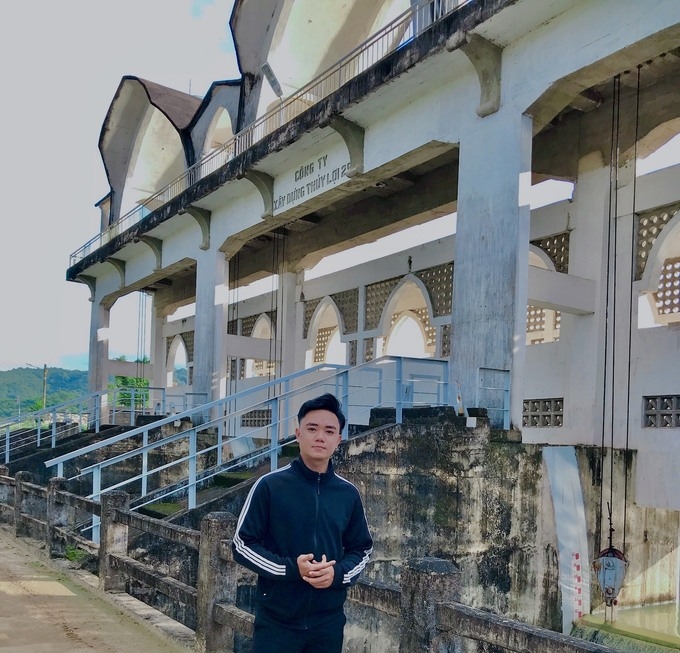
Phu Xuan reservoir project. Picture: MHN.
Mr. Pham Van Tuan in Xuan Phuoc Township, who used a water pump to irrigate the elephant grass growing along the river, confided: This is a piece of land due to the terrain preventing the shore from leaving only a small corner that known as “scarred head and tail” to grow grass for cows. As a result, it only takes 30 minutes to mow grass and bring it back to feed the cows, but before that it had to spend all day working at the edge of the to sit and graze in the field to get a basket full of grass while the shore land was dry and deserted.The river flows smoothly all year round, besides growing grass, people also grow crops…
Mr. Tuan recalled when there was no Phu Xuan Lake in the summer, the Tra Buong River was bare, the dark duck herd spread a tarpaulin in the middle of the river, which was a sandy beach to sleep on. Along the river there are only Bau Son, Dong Thanh and Ba Chan areas, the water is still closed. Back then, to water the bearded corn, the melons had to dig the well in the middle of the river and then carry the pump out to suck.
Back then, the rich could only afford the F10 pump, a Japanese-made machine powered by a diesel engine and weighing more than 1 hundredweight, which was carried to the river for pumping irrigation. But the then F10 “oil pig” (the part that injects fuel into the combustion chamber) has been likened to the heart of the F engine, which was carried to the river in the morning to pump water for irrigation and then pumped back in the afternoon when the engine was left outside river, stealing night thieves. Now the river always has water, in the afternoon go to peel the acacia (peeled acacia wood) back, bring a small pump, only carry one hand, put the pipe under the river to water for 5-10 minutes to pump the bank overflow.
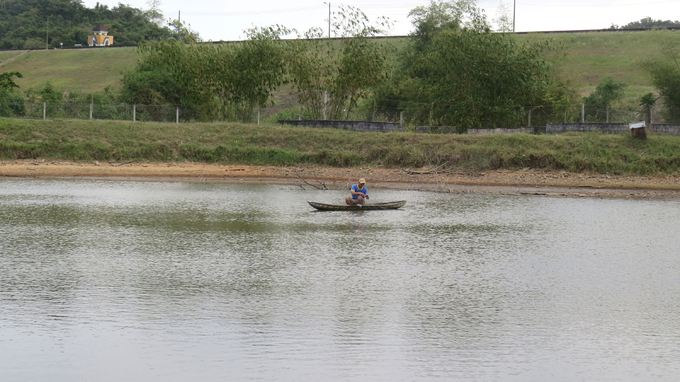
Phu Xuan Dam. Picture: MHN.
Water from Phu Xuan Lake flows through the N2 Canal used to irrigate fields in Phu Xuan A Village, Phu Xuan B Village, Phuoc Hoa Village (Xuan Phuoc Township) and Phuoc Nhuan and Phuoc Loc (Xuan Quang 3 Township) leads. The N1 canal carries water from Phu Xuan Lake to irrigate part of the field in Phu Xuan A village and the field in Thanh Duc village.
Ms. Nguyen Thi Huong (62 years old) from Phu Xuan B Village recalls: When Phu Xuan Lake didn’t stop the flow, the men and women in the village got married, all worried about the “separate pot”, tried to cultivate and do business. The fields on the land collect water from the sky and produce one crop of rice per year. By working in the fields to catch the water from the sky when the first rains of the season fall, everyone in the village can go to the fields to collect water to plow and put into the new rice crop.
“I don’t have cows at home, I have to wait for people to finish plowing before I hire oxen to plough, sow late. At the end of the harvest, the surrounding fields are harvested, my field is still green, the cows stay in the village to eat and eat. In the middle I always lose my own harvest. After the rice harvest, anyone who hires me to do what I do earns money to grow rice and eat every meal,” Ms. Huong recalled.
“Since the day the state invested in the construction of the Phu Xuan reservoir, the field has been producing two crops a year. Rice is not only eaten in abundance, but also sold to make a living,” Huong said excitedly.
Mr. Nguyen Van Trung, a resident of Phuoc Nhuan Village (Xuan Quang Township 3), also recalls: Back in the field in front of the village, the producer had to rely on the water of heaven, had to wait for the rain to cover the ground wet before the cows are brought out to plow the land. The clods are lifted every inch as big as a basket, then harrowed with cows so the soil can’t be crushed, so when harrowing, someone has to drive behind to break the clods to make them smaller, so that the clods when sowing rice not to be crushed, crush the seed when germinating.
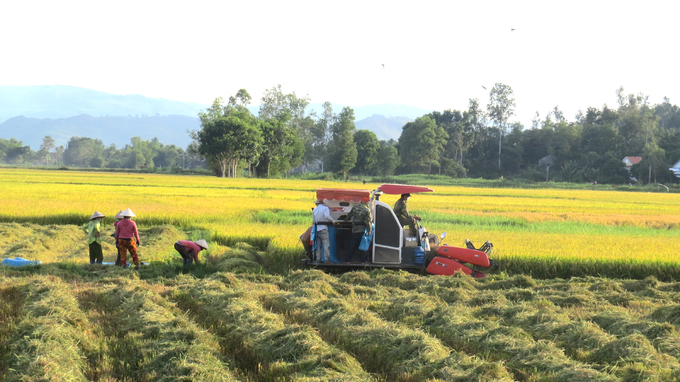
Rice field in Xuan Quang 3 township, self-irrigation in Phu Xuan Lake. Photo: MHN.
One year sowing a rice crop, long day rice variety, only 6 months to mature red tail. There were years when the rice was in full bloom, the rice crop was short, the badger seeds were not full, and 1 bushel of seed (1,000 m2) was cut without 8 bags, which is 40 quintals/ha. If there is a Phu Xuan Lake that “rises up to be the sky” to be irrigated, farmers use hand plows and harrows to sow rice.
Since Phu Xuan Lake was irrigated, the rice fields of Xuan Quang Township 3 have been constantly changing. When it comes to rice harvesting, the field is first plowed up by hand plow, farmers have to spend all day hoeing the corner, recently the pan plow “hugged” close to the edge of the corner. People used to shovel rice (that is, meat rice for seeds), now farmers in the field sow the super primary seed, when the rice head is bent and ripe, the seeds are large and shiny, the harvest reaches 70 hundredweight /ha. The field is changing from day to day, drones are now spraying pesticides, farmers no longer have to carry a pump on their backs like they used to.
Poetic peanut season by the river
If one has an opportunity to cross the Tra Buong River Bridge connecting Phuoc Loc and Thanh Duc Villages (Xuan Quang Township 3) in sunny March of the lunar calendar, one will find that this time is also the peanut harvesting season on the Tra -River is Bong. The scene of the peanut harvest is very poetic.
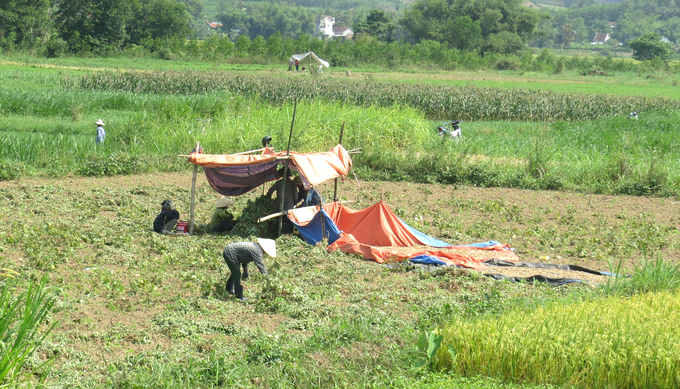
Peanut harvesting along the Tra Buong River. Picture: MHN.
The Tra Buong River flows through Xuan Quang 3 township, on both sides, in the rainy season, alluvium accumulates on slopes near the river bank, people around the peanut cultivation area. In the harvest season, Mr. Phan Van An of Team 8 (Thanh Duc Village) came out in the morning and stooped to pick beans. In the middle of the morning he went to a bamboo shop near the river to cut bamboo thorns (dry bamboo tips) and then cut off a branch of a jujube tree, scrub the peanuts and pull them. Mr. An used a machete to sharpen the sharp bamboo root, then stood it upright, placed it on a branch of the apple tree, and ground it into a smaller circle than the bamboo shoots collected above.
He took a small canvas to build a hut and then picked up peanuts and spit piled into the hut outside the crowd to sit quietly and avoid the sun. Around noon, the river bank blew heavily, Mr. An stood up for the hut to “carry” more peanut strings to prevent the wind from blowing the tarpaulin.
One said that with fake peanuts, in addition to fertilizing when hoeing around the root, some people worry that the hoe will cut off the roots, leaving a hard layer of soil around the base, making peanuts less fake. Therefore, the weeds for the “broken pot” must be dug up, that is, until the soil is porous near the root, there is no hard layer of earth around the base, so that when the peanuts pierce the rays, they penetrate easily can the soil, will come out false tubers. On alluvial soil pumped up by the Tra Buong River, farmers grow high-yielding peanuts with many branches so that when the tubers are uprooted they are the size of a rice bowl. The actual yield is 50 quintals/ha.
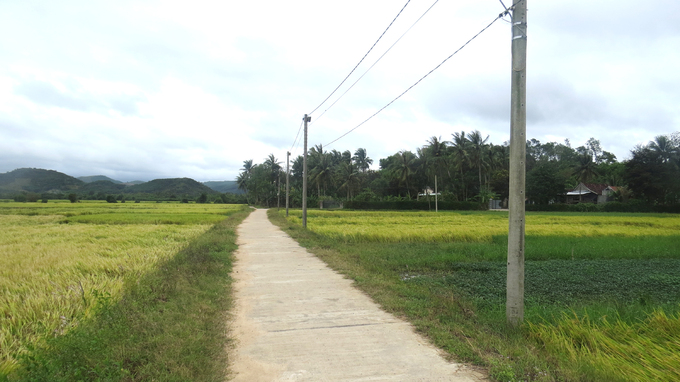
Thanks to Phu Xuan Lake, villages in Dong Xuan District are now full of life. Picture: MHN.
Ms. Tran Thi Duoc, also in Team 8 of Xuan Quang Township 3, sat alone in a peanut hut and shared: Previously, when she planted peanuts like sparrow beans, after planting white rice for the sky when it rained, she would pull him , while others: peanuts died in the drought, fields withered, farmers got nothing. Now new varieties of peanuts are planted, actively pumping water for irrigation, disease-resistant, so that we can safely eat this year.
Along the slopes, the peanut hut is extended, 2-3 people sit in the hut to avoid the sun, there is a single house, there is a “abbot” in the peanut hut. Mr. Truong Van Bac from Xuan Son Bac Township (Dong Xuan District), who was standing near the Tra Buong River Bridge and looking at the peanut hut, confided in me: I came here on the occasion of the peanut harvest, looking at the hut with sobs Riverbank my heart, I looked engrossed. I had this scene before in my hometown, not anymore. Looking back at the peanut shack is really poetic after a long time.
Mr. Pham Trung Chanh, vice chairman of the Dong Xuan District People’s Committee, said that the Phu Xuan Reservoir, which blocks the Tra Buong River, was started in late 1993 and completed in early 1997 to bring water to the fields. Phu Xuan Lake irrigates 450 ha of paddy fields in the three communes of Xuan Phuoc and Xuan Quang, which lie on the banks of the Tra Buong River. In addition, it irrigated peanuts, corn, squash, cattle grass… for the people of the district’s communities.

